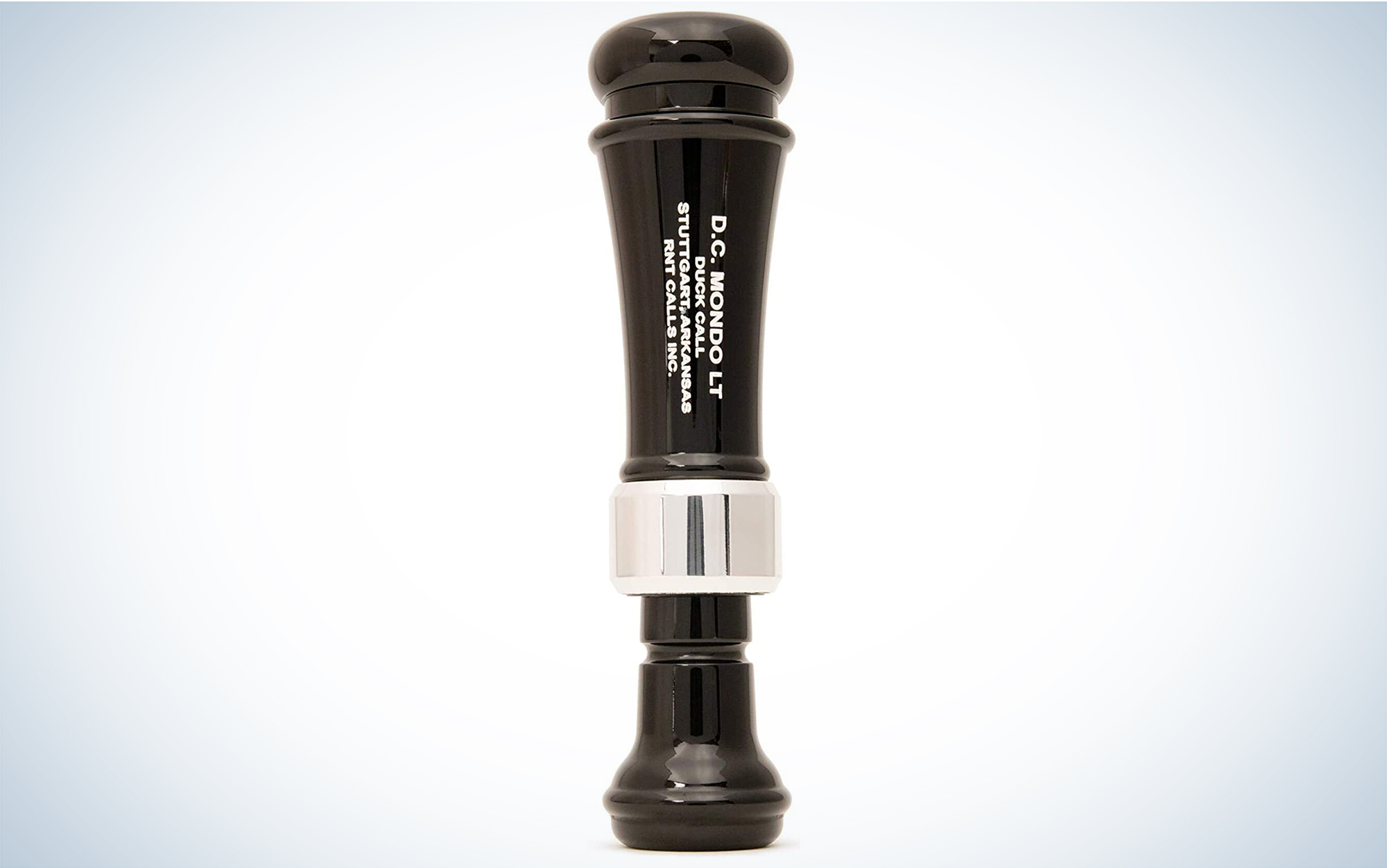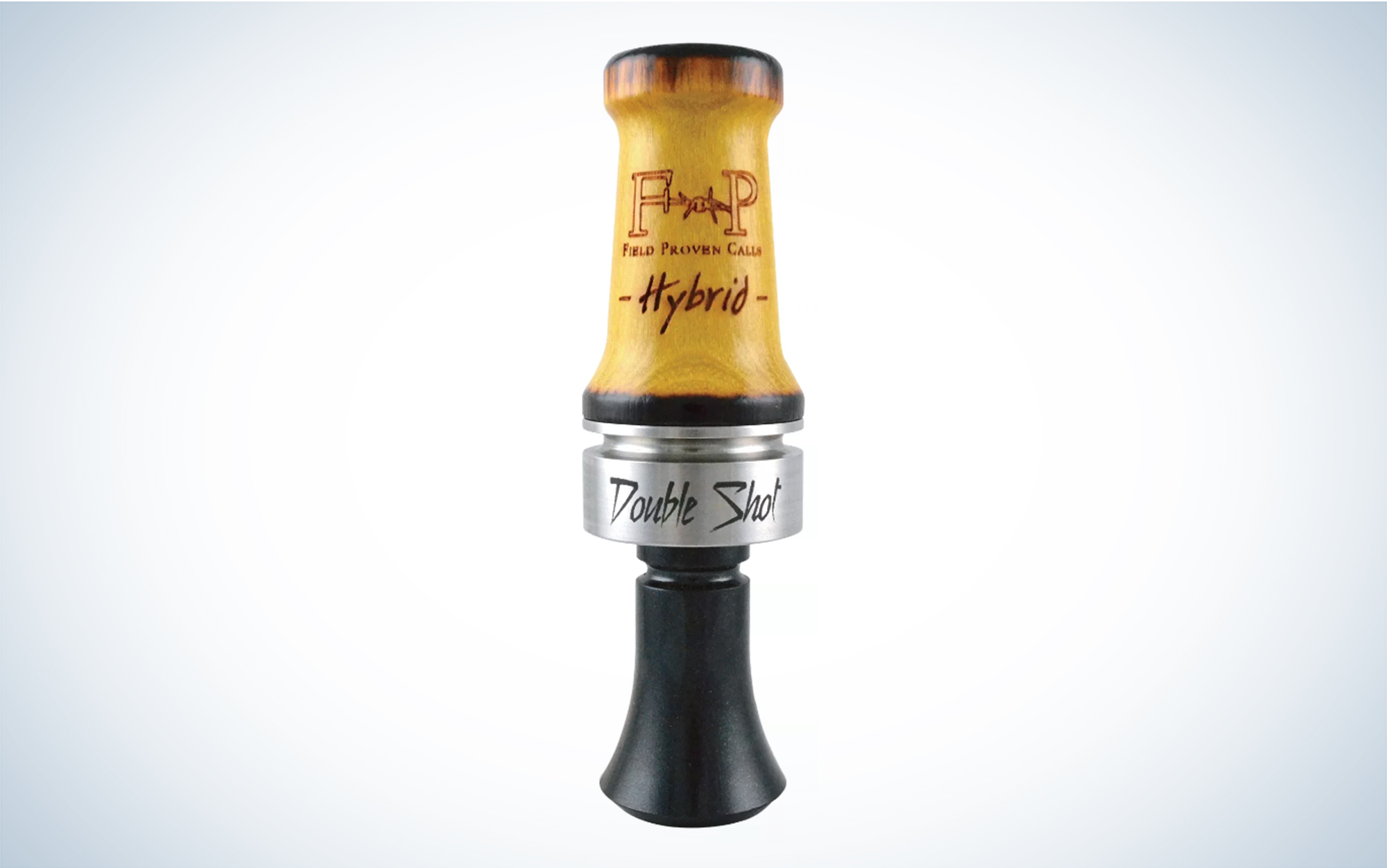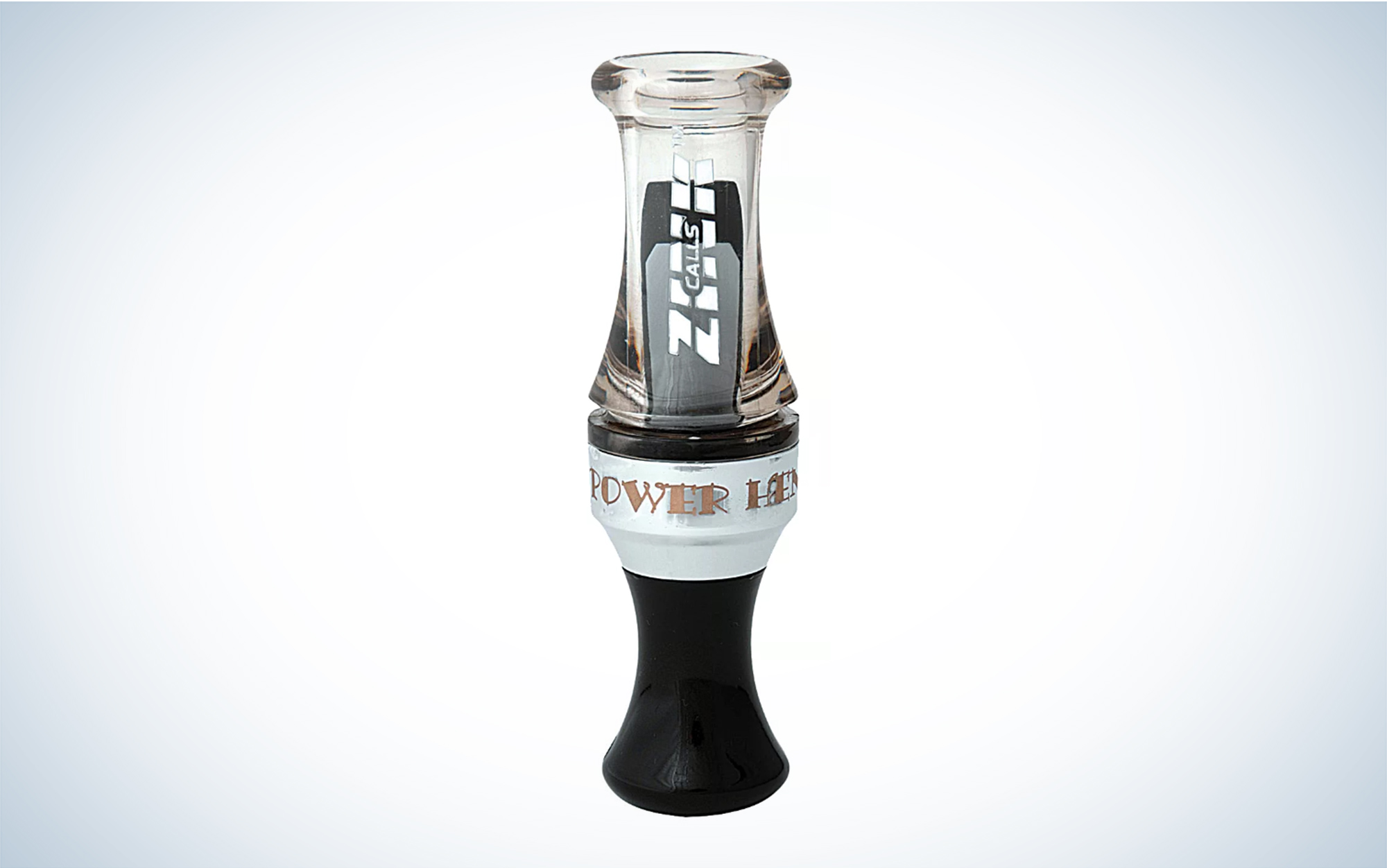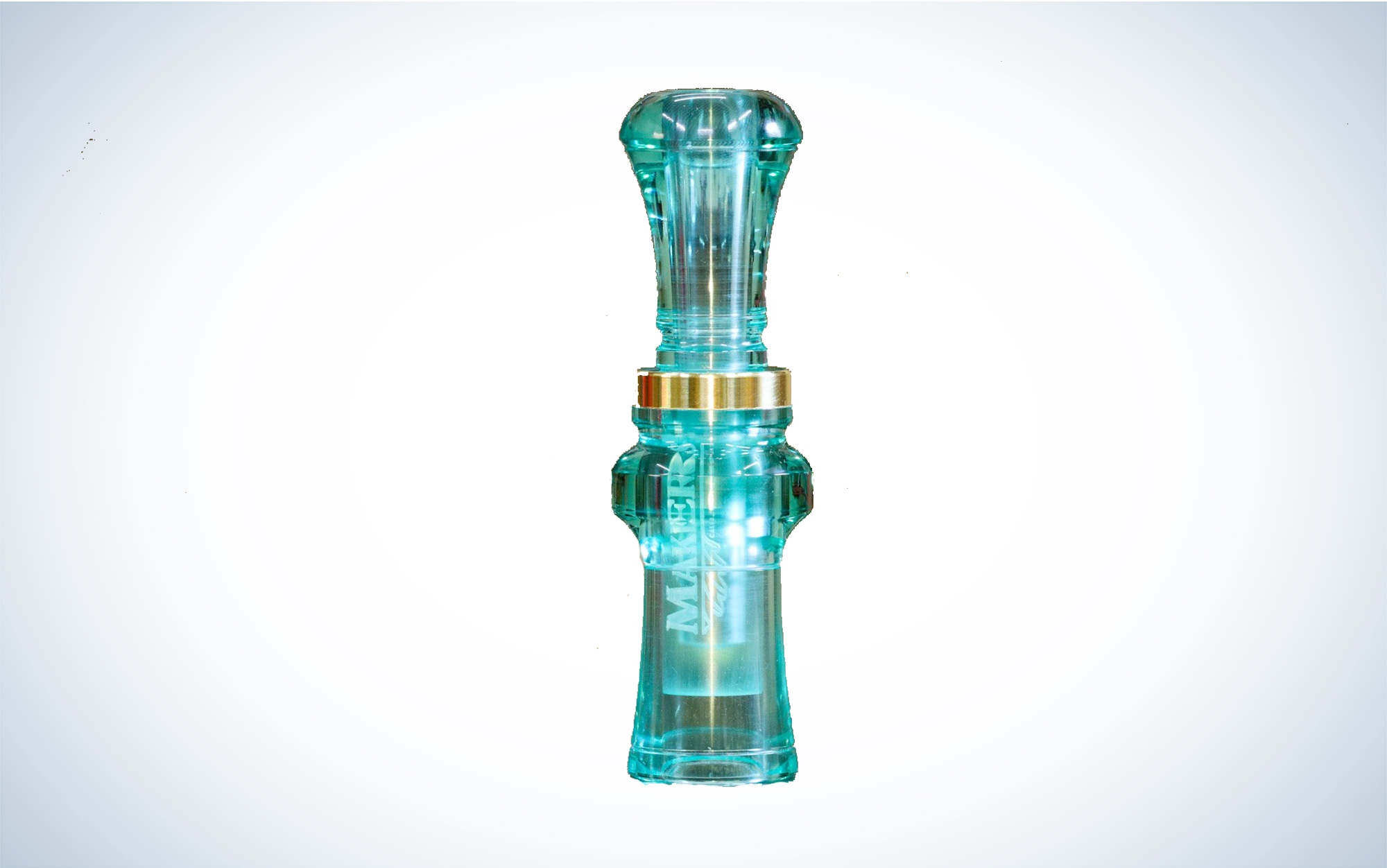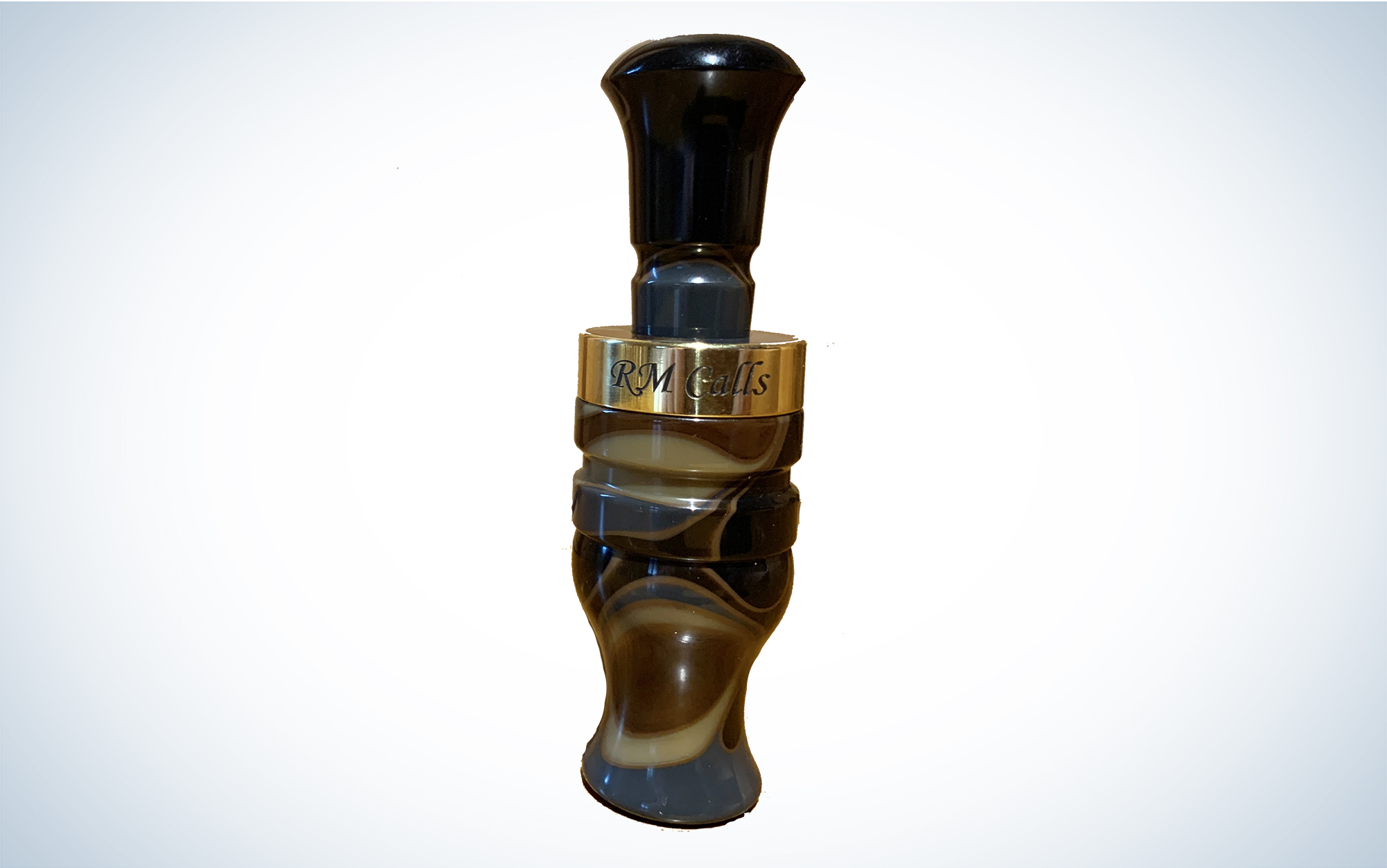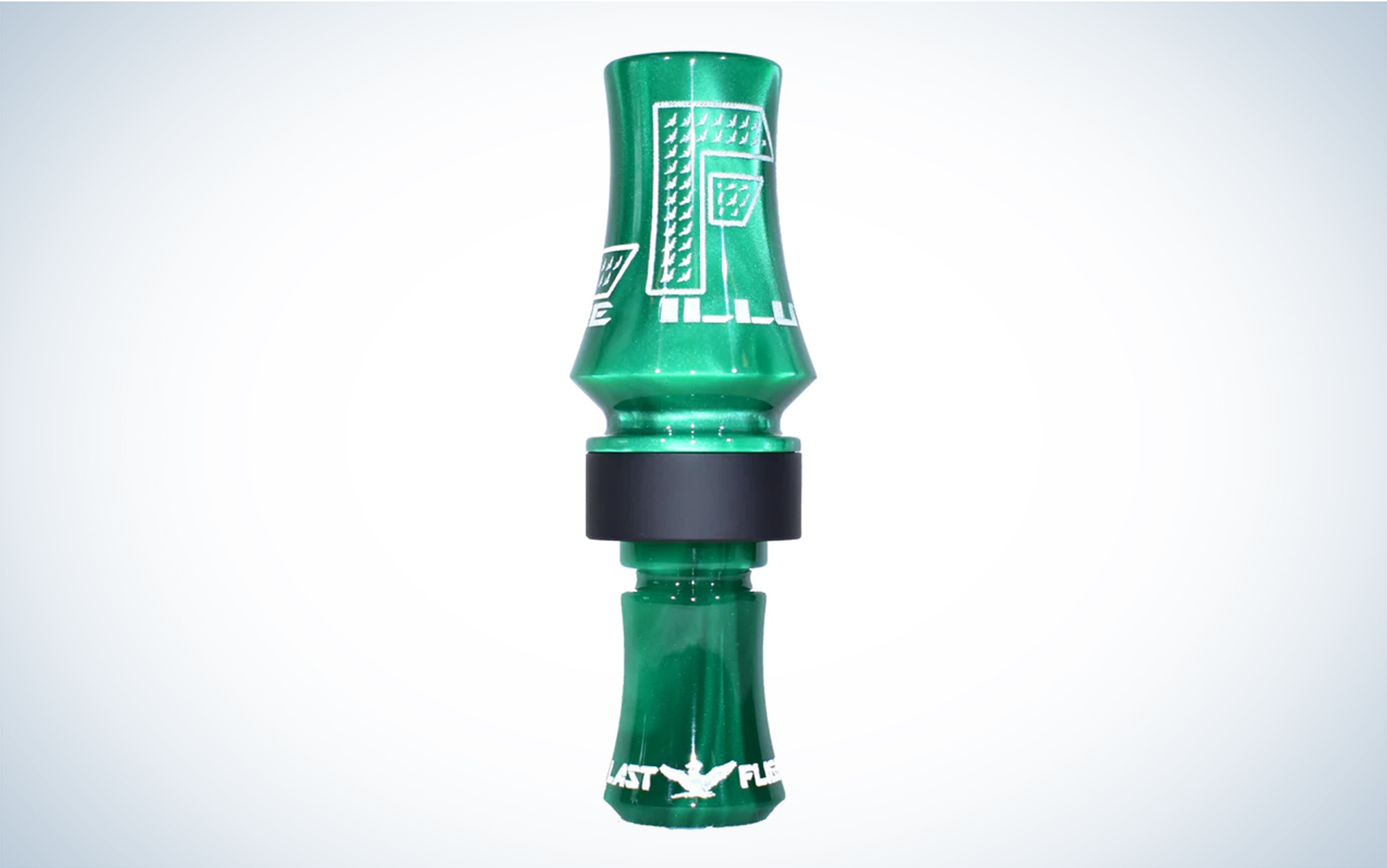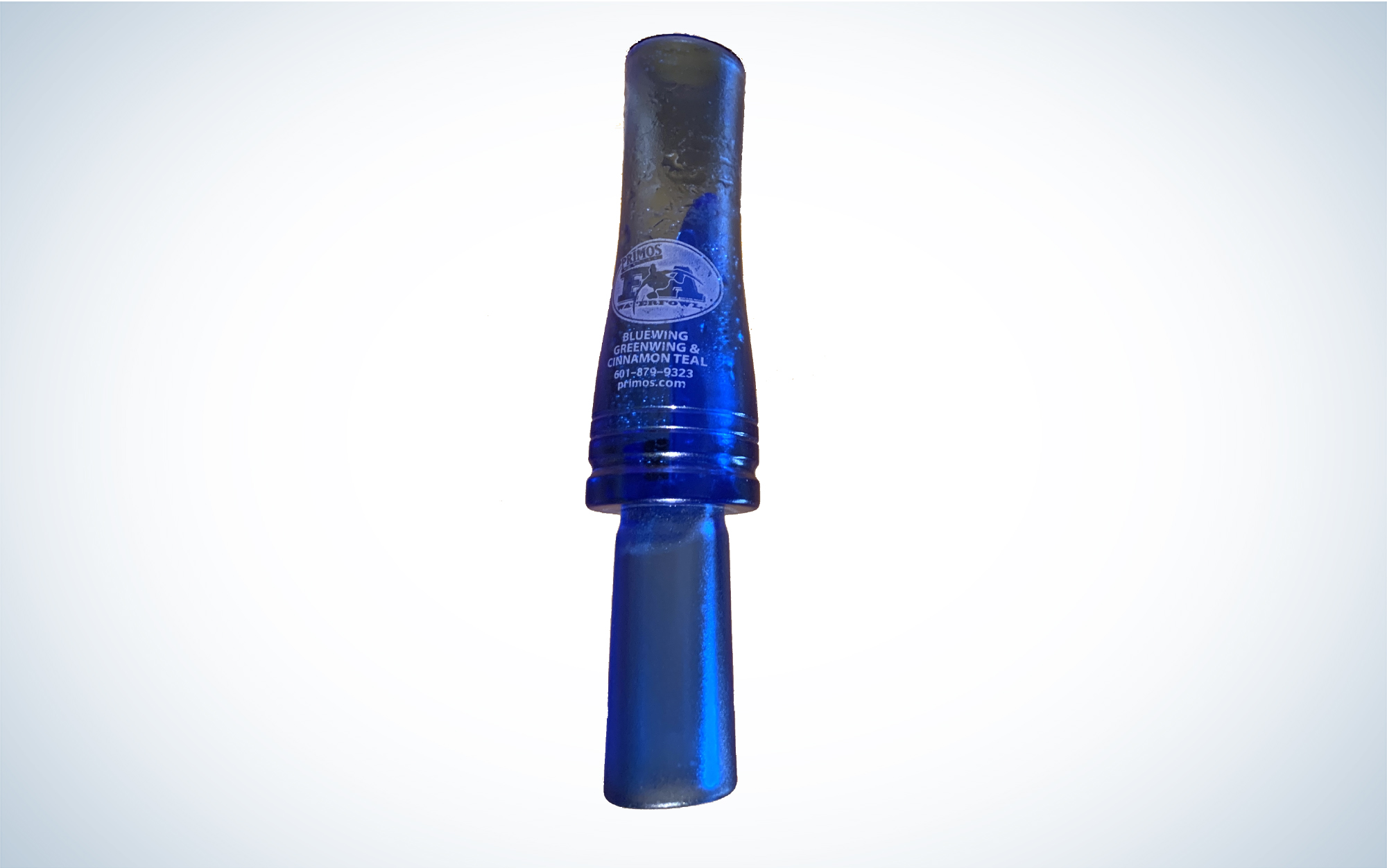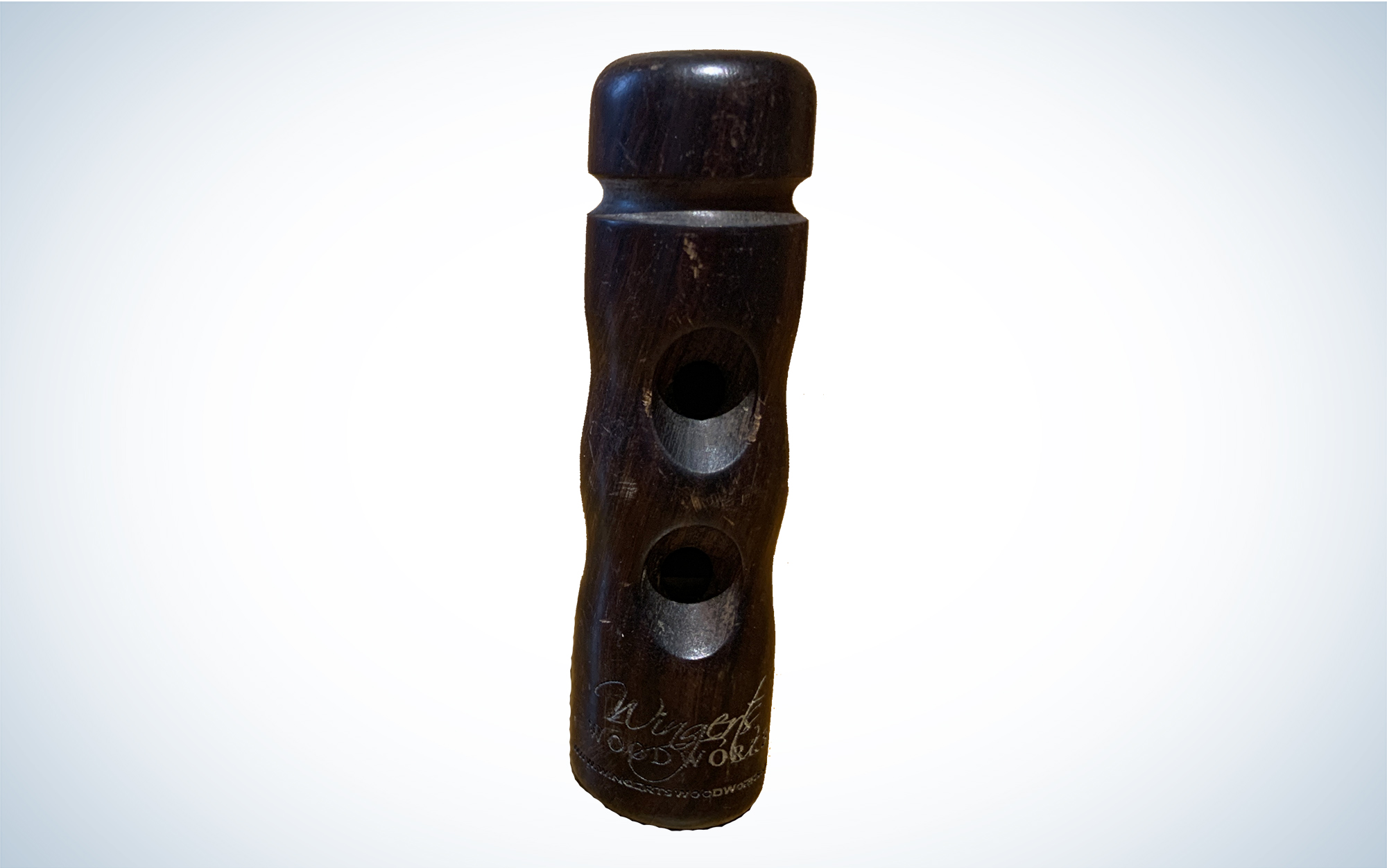We may earn revenue from the products available on this page and participate in affiliate programs. Learn More ›
Updated Sep 28, 2023 10:08 AM
Finding a duck call for your style of calling isn’t easy. We all present air and use air inflection differently when a duck call comes to our lips, which is fine because there’s no one true way to blow a call correctly. But I have found that spending a little more money on a call makes up for my lack of ability and the small amount of time I have to practice. You should always choose a callmaker that can customize the reed to your style of calling as well.
There are a myriad of calls to choose from: woods, acrylics, hybrids, cutdowns, J-frames, single- and double-reeds, Reelfoot-style calls that use a metal reed for more volume. They’re almost endless. And then, there are so many folks making calls these days, mainly because it’s fairly easy to build an average duck call. There are literally a handful of guys in Texas that mass produce barrels, inserts, and reeds for a significant number of today’s calls. Some of the callmakers on this list do use an outside party for components, but many do the work themselves or, at least, came up with call and tone board design.
Before you buy, know that the duck call that works for your blind buddy may not work for you. Try your best to pick a call that syncs with the way you present air into it. Any competent callmaker will be able to hear you blow their call and know how to tweak the reed just right. If they can’t, move and continue your search for the best duck calls.
Best Duck Calls: Reviews and Recommendations
Best Overall: JJ Lares Hybrid
Key Features
- Reed/tone board based on Louisiana-style call
- Single reed
- Saliva ejector system
Pros
- Incredible versatility
- Best tone board of all the calls
Cons
- Small call size
- Most expensive on the list
Five years ago I started seeing JJ Lares duck calls around the necks of expert duck hunters. The Lares Hybrid is the company’s most popular model because it’s the most versatile in the lineup—a mid-range call that includes some features of the high-end of the Lares A-5 and low-end of the T-1, a timber call. The Hybrid features extremely tight tolerances in its craftsmanship, and also offers different length reeds. That gives a caller the opportunity to unlock new levels of control and range with it, on top of the huge range you get with the standard 1.350 reed.
Versatility in the Hybrid means you can get whisper-quiet with it on a prairie mudhole or hit screaming cadences that cut through high winds, key for me here in the Central Flyway come December. There’s a saliva ejector system built into the call so that your spit won’t build up and cause the reed to lock up. —Drew Palmer
Key Features
- Single reed
- Acrylic
- Cutdown
Pros
- Based on original Mondo design, but quieter
- Low-end control for finishing ducks
Cons
- Can lock up in cold weather
If you hunt Arkansas green timber an RNT Mondo—modeled after PS Olt’s D-2—is likely on your lanyard. The Mondo LT (or lite) isn’t quite as loud as the original Mondo, which flooded timber hunters have long used to break down high-flying ducks. The LT offers more control on the low end and has a bit more “rattle” in it. That means when you go into a feed call it’s easier to run and is raspier. It’s also a great beginner’s call, because you don’t have to pull air from your diaphragm to get it running, you simply blow into it. That’s great for new callers trying to pin down the cadence of a hen mallard. But the Mondo LT is also an awesome cutdown if you’re an advanced caller. The speed at which you blow a call can sometimes lock up less advanced calls, but you can run the Mondo LT as fast as you want to. The only issue I have had with the LT is that it can freeze up in the cold, but it’s hard to find an acrylic call that won’t.
Why It Made the Cut
You’re paying $65 for a double-reed built by a world calling champion.
Key Features
- Double reed
- Osage (wood) mouthpiece
- Polymer insert/tone board
- J-frame
Pros
- Affordable introductory call
- Hybrid gives you better sound coupled with durability
Cons
- Sound isn’t as good as pricier calls
Product Description
The Hybrid Double-Shot is a $65 call built by champion duck and goose caller Field Hudnall and his brother Clay—a tough price to beat if you’re a beginner or intermediate caller looking for affordability. The mouthpiece is Osage, so you get the soft sounds of a wood call. But the insert is polymer, which adds a bit of volume when you need to reach out to tall ducks. A double-reed, the Double Shot takes less air pressure to blow than a single. That’s helpful if you struggle to draw air from your diaphragm—the main hurdle most new callers face. It’s a little squeaky and flat when you lean on the Hybrid hard and try to run it fast—the price of buying a price point call. If you want more from your call, Field Proven makes the single-reed Single Shot and Shot Caller.
Key Features
- Single reed
- Polycarbonate
- J-frame
Pros
- Price
- Good sound for the money
Cons
Quality is one of the staples of anything Fred Zink makes. He doesn’t skimp on product components, but he will make affordable options for working-class hunters, like this PH-1 Polycarbonate. It’s a plastic call that costs $30, and if you’re just getting started, I can’t recommend a better option. The mouthpiece is flared, which makes it easier to push more air into the call and make it sound like a Susie. You can run this call damn hard without reed lockup and its cadence is authentic. The one drawback of this call is it won’t last forever because it’s plastic. But if you take care of it, the PH-1 will serve you well for several seasons.
Best for Migration Days: Makers Origin
Key Features
- Single reed
- Acrylic and wood offerings
- J-frame
Pros
Cons
- Can be hard to control for novice caller
If you like to move air through a call, the Makers Origin is the right single-reed for you. An acrylic J-frame that also comes in wood options, the Origin produces incredible top-end volume—it’s as loud as some cutdown calls I’ve heard, critical for hunting ducks on bigger water or migration days. You can get soft feeder chuckles with this call, but it takes a significant drop in air flow to do so, which can be hard for inexperienced callers to master. There’s quite a bit of rasp in the Origin. I like that in a call because it allows me to do more with it. For instance, I struggle making the bouncing hen call with a shorter, thus stiffer reed, but with the Origin I can close off the air flow and transition back to the quack quickly to keep it running.
Best Custom: RM Custom Cold Weather Fan
Key Features
- Single reed
- Acrylic and wood offerings
- J-frame
Pros
- Incredible range
- Proven stage call (7 world titles)
Cons
- Higher end calls are $140 (there are cheaper options)
- Not an ideal call for beginners
I have been blowing Ronald “Stump” Laun’s calls for nearly 15 years. And the Cold Weather fan is one of the best duck calls on the market when it comes to sound quality. The CWF is his most popular because it has more range than any of the other RM calls. You can go from top end greeters to dulcet quacks more easily than with any of the other calls that made the list. It’s not the loudest single-reed I reviewed, but there’s no lock up with this call. Some hunters will change their reed every season or two—though you shouldn’t have to unless the mylar cracks. I blew my last RM call for eight years without swapping reeds out for a new one. And the reed didn’t exactly fail me, it was just locking up at times, so I sent it in for a tuneup. If your air presentation is on point with this call, it produces the duck sounds you want it to. That’s not always the case with less expensive models.
Best Single-Reed: Last Flight Illusion
Key Features
- Single reed
- Available in acrylic and Delrin
- J-frame
Pros
- Big sound
- Fast
- Responsive
Cons
- Takes big air to blow
- Price
The exhaust of Last Flight’s Illusion is one of the most open you will see in a duck call. That gives the call more volume, but you also have to push quite a bit more air through it, not a bad thing if you have the lung capacity. It’s a fast-running call that responds quickly, so aggressive callers will be happy with its performance. There is no squeak of flatness in the sound of this call—bad news for wary, late-season greenheads who are looking for any reason not to light in the decoys. I don’t like the fat, short insert on the Illusion. The call has more girth than all the others, but my big hands create unwanted back pressure if I don’t keep my fingers open.
Best Teal: FA Brand (Primos) Blue, Green, Cinnamon Teal
Key Features
- Single reed
- Polycarbonate
- J-frame
Pros
Cons
- Short supply
- Made of plastic
Calling teal with this FA Brand (now built by Primos) single reed is simple. You essentially say the word “to” in a five-word sequence into the call with varying amounts of air inflection to mimic the sounds of bluewings. The only slight difficulty with this call is finding the proper back pressure to make it sound best. You will have to play with the size of the chamber you make with your calling hand to get it right. I’m sure there are more authentic teal calls out there, but I’ve never subscribed to the belief that blowing one will elicit much of a response from a flock of bluewings. So I don’t see a reason to spend much on a piece of plastic unless you hunt a region of the country they winter in, like Texas or Louisiana.
Best Whistle: Wingert’s Woodworks
Key Features
- Wood, acrylic, and micarta offerings
- Makes greenhead, wigeon, pintail, teal, and wood duck whistles
Pros
- Sound is authentic
- Great quality
Cons
A good duck whistle is one of the best tools a hunter can have around their lanyard and Aaron Wingert builds some of the most beautiful—and functional—ones on the market. You can fool teal, greenheads, wigeon, pintail, teal, and wood ducks into shotgun range with this whistle. I’ve had one for almost a decade, and it’s been a go-to late-season call for me. It’s best to use when the neighbors are blasting high-balls at smart mallards. Hit a few greenhead dreets on the whistle and see if you can peak the interest of pressured December drakes.
The Four Types of Ducks Calls

J-frame or Arkansas-style
The most common type of call these days is the J-frame (because the profile of the insert is in the shape of a “J”). The tone board is curved, and the reed or reeds (depending on if it’s a single-, double-, or triple-reed call), and a wedge, typically made of cork, sits on top of the board, and slide into a wedge slot.
Louisiana
This call looks very similar to a J-frame, the biggest difference being that the tone board, reed, and wedge are combined into one unit before being installed inside the barrel.
Reelfoot
Named after Reelfoot Lake, these calls are scarce (unless you’re in West Tennessee). They use a metal reed for more volume and the tone board is flat.
Cutdown
Typically long and skinny, cutdowns also have a J-shaped insert, but the reed is shaved and cut to give it more of a bark sound than quack.
FAQs
Q: How do I buy the right duck call?
If you are a new caller, it’s much harder to find the best duck calls that fit your style of calling because the experience isn’t there yet. The better caller you become, the more calls you will blow well. So when people ask this question, I refer them to a callmaker as opposed to one single call. Pick an accessible callmaker, someone that will answer the phone or respond to an email if you have questions. The best time to buy a call is at a waterfowl weekend at your nearest retailer or calling contest. Many callmakers show up to these. You can blow their calls and pick the one that’s right for you. The call makers will also tune the call specifically for your style of calling.
Q: What’s better, a single- or double-reed?
Whether a single- or double-reed is better is subjective and based on how you present air into a call and the amount of air you can push through the mouthpiece. Typically singles take more air to operate; doubles less. But that is also dependent on the width of the mouthpiece and barrel opening. Oftentimes beginners are told to get a double-reed because they are “easier to blow.” But that’s not necessarily true if you move a lot of air through a call—single-reeds are better for that. So neither is really better or worse. They’re just different.
Q: How do I make a duck call sound like a duck?
There are all kinds of Youtube videos out there to help you make a duck call sound like a duck. Some are good; others not so much. The key to running these calls—with the exception of cutdowns—is to bring the air from your diaphragm. You are pulling air from your gut, not blowing it into the call. When you put air into a duck call, your stomach should feel as full as it does after finishing Thanksgiving dinner. But in this case you are filling your stomach with air, not turkey and stuffing.
Q: How do I call ducks?
Experience will help you read ducks and know when to call to them. A fair amount of hunters call just to hear themselves call and don’t know how to hunt ducks. Don’t do that. Let the hunting groups around you make that mistake. It’s unnatural and you can take advantage by staying mostly quiet. Early on in my duck hunting career I had two calling rules: I hit ducks with a cadence when they turned away—known as a “comeback call”—and never called ducks flying straight at me. The comeback call will get a lot of ducks to turn around and take another look at the spread (hopefully they will commit). Not calling when ducks are flying right at you is smart because they are already coming to you, so there’s no reason to show them your cards. Just let the birds cup in.
Final Thoughts
You can ask other duck hunters what the best duck calls are, but you shouldn’t buy a call based on their opinion alone. We all buy plenty of hunting gear online these days, but going to a retailer’s waterfowl weekend so you can blow the calls before you buy is the better play. If you order a call without ever blowing it, most big box stores (and even smaller ones) won’t take them back if it’s out of the package. You can always resell it to someone, but they aren’t going to pay full price for it. So instead of cheating yourself out of hard-earned money, take the time to go to a waterfowl weekend if possible and get some hands-on experience.

